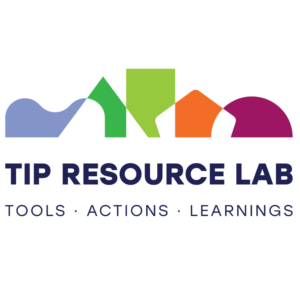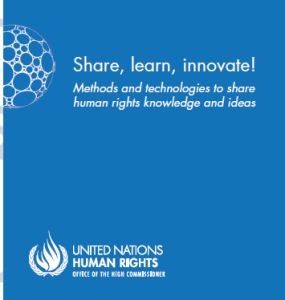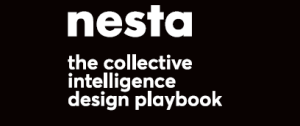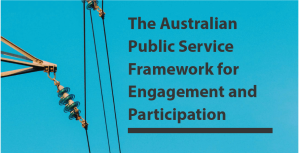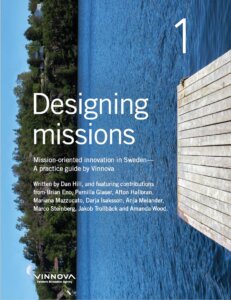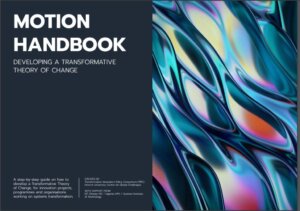Process Facilitation and Co-design is an integrated part of many disciplines and practices but is also a practice and expertise in itself. Co-design, especially when it crosses disciplines, involves blending different perspectives, expert languages, and cognitive preferences. Thus, the role of the process facilitator is to create the space for inclusive and creative participation as well as the sequence of activities in an overall process so participants can contribute to a common goal.
By Thomas Holst Madsen
Process Facilitation & Co-Design often involves the following tasks:
- Planning and managing the design process
- Setting the team
- Choosing and (re-)designing methods and tools
- Inviting stakeholders
- Reflecting on and evaluating the process
The role of a process facilitator is not the same as the role of a project manager, but they need to work closely together. The project manager has the responsibility for the entire project and outcomes, whereas the process facilitator can be seen as the conductor of the specific activities within the co-design process.
If you do not have the advantage of both a process facilitator and a project manager, then it is important to be aware of the different roles you play at various points. It is important to highlight the importance of gaining confidence and trust from the people involved. You have to communicate intentions clearly, in order to receive honest responses in return, from e.g., users, citizens, clients, customers and stakeholders. Moreover, sometimes subject experts step into the role of process facilitator but these two roles should remain distinct so participants trust that the facilitator is not perceived as giving preference to their own perspective or their agenda.
Basic principles
Process Facilitation & Co-Design should,
- be carried out in an explorative approach
- separate process from content
- separate phases of a process (for instance, brainstroming versus decision-making)
- be collaborative
- be an iterative process
- initiate and stimulate creativity
- give voice to end-users, collaborators and stakeholders
State of the practice
When working with innovation, often we do not know what the solution might be and we are, therefore, in what we call the “unknown” or the messy or fuzzy front end and is characterised by high levels of ambiguity. As a way for us to respond to this challenge, we can use a design process as a guide and systematic approach to develop different possibilities.
The co-design process helps us navigate through a project by providing a structured way of working together as a team. The process allows us to ask the right questions at the right time and make the right choices at the right time. In that manner, the design process can be compared to a classic decision-making process. The design process is, however, different in the sense that the purpose is to not only make the decision(s), but also to create something new through creative methods.
By using iterative processes, the project can take advantage of the full potential of the creative approach in co-designing. The iterations allow us to work in a more dynamic way, for example by repeating specific phases to explore the wider perspectives. Thus, designing the actual process during the project is a central skill in process facilitation. In relation to the data collected and the knowledge gained along the way, the process facilitator decides where to go. It might be an advantage to go back to a previous phase for further investigations or maybe to take a leap forward in order to make an early prototype.
Another essential characteristic of process facilitation is to guide the participants through the different phases and methods used, with the right approach and mindset. Sometimes divergent thinking is needed to open up and explore the many different possibilities. At other times, it is necessary to narrow down the possibilities and make concrete choices, by using convergent thinking.
In a co-design process, it is the job of the facilitator to orchestrate how the participants can contribute in, for example, a workshop. By stimulating the creativity, framing the possibilities to choose from, defining the rules and setting the scene, the facilitator provides the best conditions for co-designing great solutions.
As a facilitator, it is important to be aware not to influence the contributions of the co-design inappropriately. The job is to be a neutral guide throughout the process, not to decide the result. Transparency and honesty are important factors when asking users, stakeholders and others to open up and be creative in a co-design process. The facilitator can ask the difficult questions but should avoid being the one with the answers.
Considerations for use in the public sector
The objective is to create value for the users, clients, citizens, stakeholders and in general human beings and not for the sake of the system. In that respect it is important to be aware of possible biases. Be critical about how systems and structures in the public sector work and allow the project to develop possible solutions beyond present boundaries.
As a process facilitator, it is part of your job to set the mood and create a safe environment for creativity. Be open towards what the users, citizens, clients, stakeholders and others need and how these needs might be met. It is, of course, essential in co-design to involve users and stakeholders in the process. However, before venturing into a co-design process, one should be mindful that it can be challenging to do so. First of all, human beings are not always rational, and their actions and choices might not be logical or make sense immediately. Furthermore, they may be quite sceptical of the project and the intentions. The only way to overcome this is to be open, empathic and understanding. Co-designing should allow users, stakeholders and collaborators can access an understanding of a problem together on mutual ground.
Typical methods and tools
Because facilitation is considered a role or as professional competency in leading a project, there are no specific methods or set curriculum tied to the role, although the professional practice is growing. Facilitators must select and use the appropriate methods and tools for the specific project at the appropriate time in the appropriate way, a type of learning that is best accomplished through practice and mentorship.
Yet, in terms of co-design, which often involves the possible end-users, stakeholders and collaborators, different mapping methods are frequently used to give a visual impression on the data and inputs collected in the process, e.g., from interviews and observations.
Some commonly used methods and tools for co-design include:
- Visualizations
- Storyboards
- Prototyping/mock-up and testing
- Focus groups
- User research and stakeholder interviews and observations
- Brainstorming and idea qualification
What to consider when choosing a process facilitation and co-design toolkit
It is important to note, that most toolkits are generalized templates and should be modified for each specific use. This means that it might be necessary to rewrite text or even redesign the graphics to fit the context of the project. What matters is that the tools are part of the flow in the sense that it supports the facilitation, so that you do not have to explain or guide too much. If you lead the process too much, you might end up affecting the contribution from the participants and, thereby, manipulate the result.
Browse through some of the tools:
- Paraffin tools
- Gamestorming toolkit
- Library of facilitation resources
- Playbook for innovation learning
- SISCODE toolbox
And view all toolkits for process facilitation and co-design here.
Would you like some help?
How well-versed are you with applying these tools and methods? Do you have experience with applying these approaches in practise? If not, then the language and complexity of the working methods can be daunting. Find help and connect to a design expert who has practical experience in addressing public sector challenges. But be aware so that you do not get sucked into applying their favourite method.
Learn about building skills and capacity for process facilitation and co-design
Find OPSI network members who are working with process facilitation and co-design
Reach out to OPSI for guidance with process facilitation and co-design
Request a webinar on this topic – top-requested topics will be prioritised


